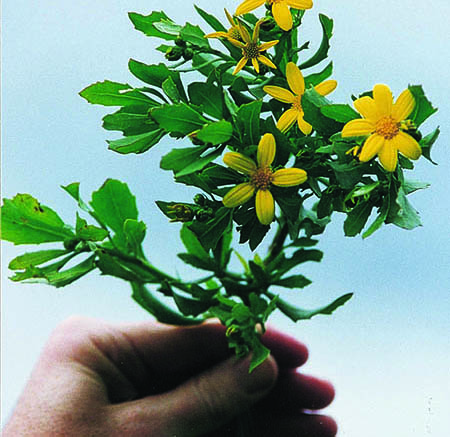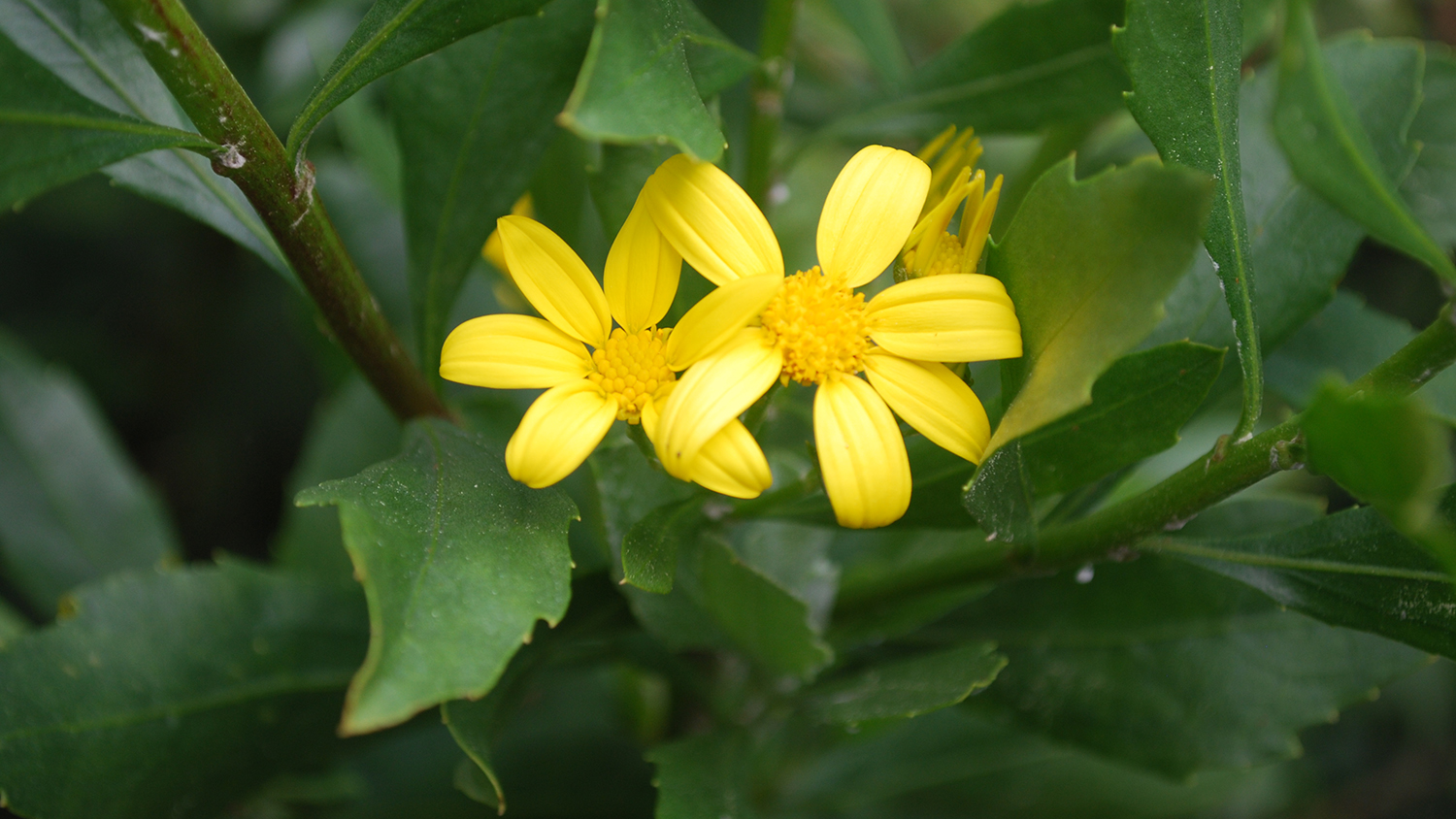| Management programme |
| Progessive containment |
| Objectives |
| Reduce the amount of boneseed and limit the locations that have it within the Waikato region. |
| Impacts |
| Biodiversity, amenity/recreation |
Boneseed, native to South Africa, was originally brought to New Zealand as an ornamental plant. It has since naturalised and spread with infestations found in coastal Coromandel locations and the west coast. It poses a threat to low coastal vegetation, where it can rapidly replace native plants. It also shades out seedling trees like pohutukawa that need a lot of light to survive. Its thick growth can also restrict people’s access to beaches.

What does it look like?
Boneseed is a fast-growing bushy shrub to small tree (to 3m tall). Seed germination can be triggered following bush or scrub fires.
Flower
- Bright yellow daisy-like flowers from September to February.
Fruit/seeds
- Clusters of small hard fruit with a thin fleshy covering, that turn from green to black when mature.
- Seeds are bone-like in colour and extremely hard.
- Each bush can produce up to 50,000 seeds annually.
Leaves
- Leaves are smooth and leathery, with irregularly toothed edges.
- Grow in opposite pairs or whorls along the stems.
Why is it a pest?
Boneseed can establish in scrub and on sand dunes, coastal cliffs, offshore islands, and even rocky outcrops. Very hardy, it’s tolerant of most coastal soil types, salt, fire (which can kill boneseed plants but assists germination), wind, poor soils, and drought. Fast growing, it quickly forms very dense cover that can shade out and exclude all native plants under 2 metres, and limit access to coastal areas. It colonises disturbed sites faster than native species and creates heavy shade where high light levels should occur.
Boneseed can be difficult to control because of the large number of long-lived seeds it produces; a single boneseed bush can produce up to 50,000 seeds every year, and seeds can remain dormant for up to 10 years. Birds and possums eat the fleshy fruit and can spread undigested seeds into surrounding areas.
Infestations are found in many parts of the Coromandel Peninsula including Whiritoa, Whangamata, Cooks Beach, Coromandel Town, and Port Jackson. It also occurs on the west coast around the townships of Raglan, Kāwhia and Port Waikato.
Control methods
Herbicide control
Basal treatment of trunk
Apply with a low pressure sprayer using solid cone nozzle or a paintbrush. Liberally treat the full circumference and the basal parts of the shrub or tree trunks in a manner that thoroughly wets at least 2-3 times the diameter of the lower stem or trunk including the root collar area.
Cut stump treatment
Cut stems at ground level and immediately coat the stump liberally with herbicide to cover the top and sides of the stump.
Spray application
Cover all leaf surfaces with herbicide where stump cutting is not practical. Best results are achieved from spring to autumn.
Safety when using herbicides
- Follow the instructions on the manufacturer’s label.
- Always wear protective clothing.
- Always minimise the risk to your other plants.
- Contact the supplier for further advice.
Disclaimer: Any product names mentioned below are not an endorsement nor are they a criticism of similar products not mentioned.
Summary of herbicides and application methods for control
| Herbicide | Application |
| Glyphosate | Cut stump treatment/spray application. |
| Metsulfuron | Cut stump treatment/spray application. |
| Triclopyr | Cut stump treatment/spray application. |
| Triclopyr/picloram mix | Cut stump treatment/spray application. |
| Picloram gel | Cut stump treatment. |
| X-Tree Basal ® | Basal treatment of trunk. |
| Herbicide rules will apply. You may need to notify neighbours if spraying. The Waikato Regional Plan explains the agrichemical (herbicides) use rule in section 6.2 | |
More information
Advice
- For advice and additional information on control methods, call our pest plant staff on freephone 0800 800 401.
- Chemical company representatives, farm supply stores, garden centres or the Weedbusters website can also be good sources for advice
Publications
The following publications are available for download or from Waikato Regional Council. Contact us to request a copy (freephone 0800 800 401).






To ask for help or report a problem, contact us
Tell us how we can improve the information on this page. (optional)